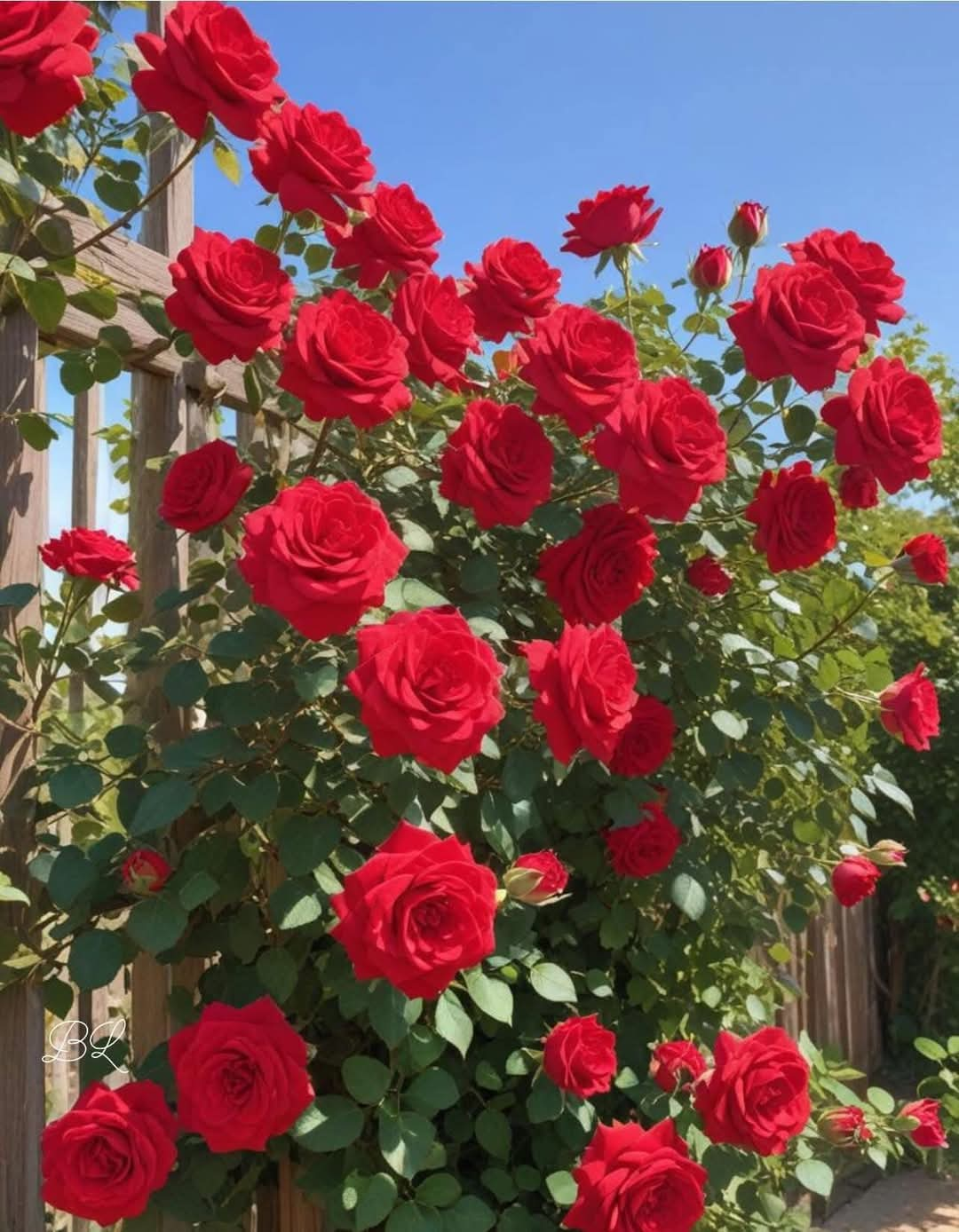As an avid gardener, I’m always excited to share the beauty and charm of climbing plants that elevate any garden. Among my favorites are the Climbing Pink Roses, a truly magnificent flowering plant that brings a touch of elegance and grace to your outdoor space. These roses, with their vibrant pink blooms, are the perfect way to create stunning vertical displays. Whether adorning a trellis, arbor, or fence, the cascading pink petals of climbing roses will transform any garden into a fragrant haven.
Why Climbing Pink Roses Are a Must-Have for Your Garden
Climbing roses offer so much more than just aesthetic appeal. Their long, trailing vines create a lush, romantic ambiance, making them ideal for garden spaces where you want to add height and drama. These roses are known for their beauty and fragrance, making them a favorite among gardeners who love floral scents.
The Climbing Pink Rose variety, in particular, is adored for its vibrant and timeless pink hue. These roses bloom in abundance during the growing season, providing a consistent splash of color and an enchanting aroma that fills the air. Whether you’re planning to use them as a centerpiece on an arbor or as a covering for a garden wall, climbing roses are the perfect plant to create eye-catching visual displays.
What You’ll Need to Grow Climbing Pink Roses
Growing Climbing Pink Roses isn’t overly complicated, but there are a few key things to keep in mind to ensure they thrive. To help you get started, here are the essential factors that will contribute to your rose’s success:
Light Requirements
Climbing Pink Roses flourish in full sun, which is vital for healthy growth and vibrant blooms. A sunny spot ensures that the plant gets enough energy to produce those gorgeous pink flowers. Aim for at least 6 hours of sunlight per day for optimal results.
Watering Needs
Roses prefer to be watered deeply and regularly. Keep the soil consistently moist, but avoid overwatering, as this can lead to root rot. Make sure your climbing rose’s soil drains well to prevent the accumulation of excess water around the roots. Deep watering encourages deep root growth, which helps the plant stay strong and hydrated during dry spells.
Soil Preferences
Climbing Pink Roses thrive in well-draining, rich loamy soil. The ideal soil should be able to hold some moisture but also drain excess water, ensuring that the plant roots do not sit in stagnant water. You can improve your soil by adding organic compost, which helps enhance soil structure and provides essential nutrients.
Temperature and Humidity
These climbing beauties grow best in moderate temperatures ranging from 60-75°F (15-24°C). They do not do well in extreme heat or cold, so it’s important to plant them in an area with a climate that falls within this temperature range. Similarly, Climbing Pink Roses prefer moderate humidity levels. Excessive humidity or dry air can stress the plant, so try to maintain a balanced environment.
Fertilization
To keep your climbing roses in peak health, regular feeding is necessary. A balanced 10-10-10 fertilizer should be applied every 4-6 weeks during the growing season. Fertilizing helps to replenish the soil with vital nutrients that the roses need to bloom profusely. Be sure to follow the instructions on the fertilizer packaging to avoid over-fertilizing, which can harm the plant.
Caring for Your Climbing Pink Roses
Climbing Pink Roses require some care to thrive, but with the right attention, they can bloom year after year. Regular pruning is an important part of caring for climbing roses, as it encourages new growth and helps maintain their shape. Be sure to prune dead or diseased wood in early spring before new growth begins. This will help your climbing roses focus their energy on producing healthy new stems and vibrant flowers.
Training the vines to grow along a trellis, fence, or other structure is also key to ensuring they climb properly. Use soft ties to gently attach the vines to the structure as they grow, and make sure to check the plant regularly to prevent any stems from becoming tangled or overgrown.
Tips + Tricks for Growing Climbing Pink Roses
Mulch for Moisture: Apply a layer of mulch around the base of your climbing roses to retain moisture, keep the roots cool, and suppress weeds. Mulch helps create an environment in which the roses can thrive by conserving water and reducing temperature fluctuations around the roots.
Pest and Disease Prevention: Keep an eye out for common rose pests like aphids or black spot fungus. Early detection and treatment will keep your climbing pink roses healthy and looking their best. Organic pesticides or a simple soap solution can be used to manage pests naturally.
Deadheading: Removing spent blooms encourages the plant to produce more flowers. Regular deadheading not only keeps the plant looking tidy but also promotes longer blooming periods throughout the growing season.
Ideal Uses for Climbing Pink Roses
There are countless ways to incorporate Climbing Pink Roses into your garden. These versatile plants can be used to:
Adorn Trellises and Arbors: Their cascading vines and fragrant flowers make climbing roses perfect for adding vertical beauty to garden structures like arbors and trellises.
Create a Privacy Screen: Plant them along fences or walls to create a stunning, fragrant privacy screen.
Enhance Pathways and Garden Borders: Use them to line pathways or as part of a flower bed, adding color and fragrance to walkways.
Conclusion
Climbing Pink Roses (Rosa) are an excellent addition to any garden, offering beauty, fragrance, and a romantic touch to your outdoor space. With proper care, they will reward you with a stunning display of vibrant pink blooms and lush green foliage. Whether you’re looking to enhance a trellis, add some color to a fence, or create a fragrant centerpiece, these climbing roses are sure to make a lasting impression.
So, if you want to elevate your garden with a breathtaking floral display, consider adding Climbing Pink Roses to your collection!
Hashtags: #houseplants #Plants #garden #leafblower
